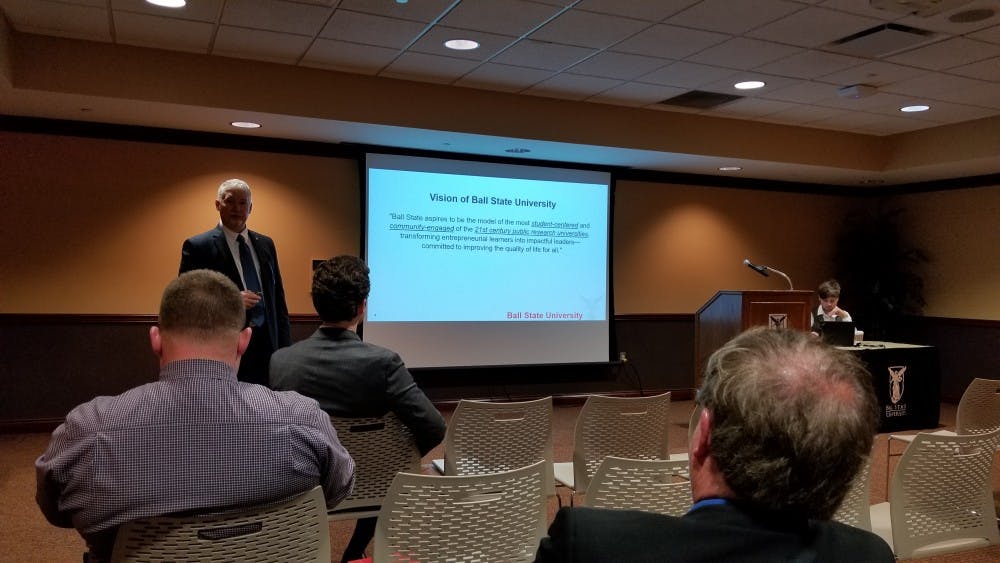After presenting at Ball State's public hearing on June 6, vice president for business affairs and treasurer Bernard Hannon opened the floor for questions.
There were none.
Hannon presented the university's proposed tuition and mandatory fee rate increase, which is the lowest proposal Ball State has planned to adopt in 41 years.
RELATED: Board of trustees aim to adopt lowest tuition increase in 41 years
"I didn't expect a big crowd or any problems," Hannon said. "People seem to be very pleased with our low rate, so I think there's a level of satisfaction that people already had that pushed the turnout down a little bit."
The recommended increases will take place over the next two fiscal years, with an increase of 1.24 and 1.25 percent for in-state undergraduate students in 2017-18 and 2018-19, respectively. This equates to $60 and $61 each semester for those two years, raising in-state tuition to $9,774 and $9,896 over time.
Comparatively, these proposed rates keep Ball State at No. 10 in the Mid-American Conference in terms of in-state tuition cost and among the lower-end of comparable Indiana schools, placing Ball State below both Indiana University and Purdue University.
These lower increases also come at a time where Ball State's retention and on-time (four-year) graduation rates has seen increases over time.
When planning proposed tuition and fee increases Hannon and his team attempt to look balance maintained growth expenditures, aligning with the university's goals, maintaining offset costs for financial aid while also taking recommendations from the state. He credits the balance to Ball State administration being able to work more efficiently when reaching these goals.
"I think that we do it very efficiently," Hannon said. "The fact that we've been able to try and work students through the system in a more deliberate and efficient manner, that increases the graduation rates. That doesn't happen by accident."
The proposed increases will also effect out-of-state and graduate students as well. Out-of-state students are expected to see a 2.02 and 2.03 percent raise in tuition, bringing tuition $25,942 in 2017-18 and $26,468 in 2018-19.
Graduate students, both in-state and out-of-state are also proposed to see tuition hikes. These increases include a 1.86 and 1.84 percent increase for in-state graduate students and a 2.22 and 2.26 percent increase for out-of-state graduation students.
The tuition and student fee increases will be voted for approval at the Board of Trustees meeting tomorrow at 2 p.m. in the L.A. Pittenger Student Center Forum Room. Other pieces on the board's agenda tomorrow include salary and wage plans, general fund budget plans and allocation of student services fees, all for the 2017-18 fiscal year.





